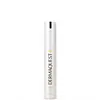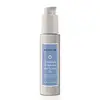What's inside
What's inside
 Key Ingredients
Key Ingredients

 Benefits
Benefits

 Concerns
Concerns

No concerns
 Ingredients Side-by-side
Ingredients Side-by-side

Water
Skin ConditioningSd Alcohol 40-B
AstringentCaprylic/Capric Triglyceride
MaskingGlycolic Acid
BufferingGlycerin
HumectantAzelaic Acid
BufferingHexyl Laurate
EmollientGlyceryl Stearate
EmollientCetearyl Olivate
Cetearyl Alcohol
EmollientButylene Glycol
HumectantSorbitol
HumectantSqualane
EmollientLactic Acid
BufferingSorbitan Olivate
EmulsifyingPPG-12/Smdi Copolymer
EmollientNiacinamide
SmoothingCetyl Alcohol
EmollientSodium Hyaluronate
HumectantDicetyl Phosphate
EmulsifyingCeteth-10 Phosphate
CleansingStearic Acid
CleansingPEG-100 Stearate
Sea Water
HumectantSuberic Acid
Sebacic Acid
BufferingUndecanoic Acid
AntiseborrhoeicTocopheryl Acetate
AntioxidantLauryl Methacrylate/Glycol Dimethacrylate Crosspolymer
Isopentyldiol
HumectantLaminaria Digitata Extract
Skin ProtectingChlorella Vulgaris Extract
Skin ConditioningSaccharide Isomerate
HumectantTrifolium Pratense Flower Extract
AstringentBackhousia Citriodora Leaf Extract
AstringentButyrospermum Parkii Nut Extract
EmollientMangifera Indica Seed Butter
Skin ConditioningRetinyl Linoleate
Skin ConditioningDimethicone
EmollientEthyl Linoleate
EmollientHexylresorcinol
AntimicrobialYeast Polysaccharides
Skin ConditioningPropylene Glycol
HumectantHedera Helix Leaf Extract
Skin ConditioningCucumis Sativus Fruit Extract
EmollientSambucus Nigra Flower Extract
RefreshingArnica Montana Flower Extract
MaskingParietaria Officinalis Extract
EmollientPhenoxyethanol
PreservativeCaprylyl Glycol
EmollientEthylhexylglycerin
Skin ConditioningHexylene Glycol
EmulsifyingMelaleuca Alternifolia Leaf Oil
AntioxidantImperata Cylindrica Root Extract
Skin ConditioningCarbomer
Emulsion StabilisingAcrylates/C10-30 Alkyl Acrylate Crosspolymer
Emulsion StabilisingMalva Sylvestris Flower/Leaf/Stem Extract
Skin ConditioningMentha Piperita Leaf Extract
Skin ConditioningPrimula Veris Flower Extract
Skin ConditioningAlchemilla Vulgaris Flower/Leaf/Stem Extract
AstringentVeronica Officinalis Flower/Leaf/Stem Extract
AstringentMelissa Officinalis Leaf Extract
Skin ConditioningAchillea Millefolium Flower/Leaf/Stem Extract
Skin ConditioningHydrolyzed Vegetable Protein
Skin ConditioningSalix Alba Bark Extract
AstringentArctostaphylos Uva Ursi Leaf Extract
Skin ConditioningMitracarpus Scaber Extract
Skin ConditioningPEG-60 Almond Glycerides
EmulsifyingNordihydroguaiaretic Acid
AntioxidantOleanolic Acid
Skin ConditioningGlycine
BufferingHydrolyzed Wheat Protein
Skin ConditioningHydrolyzed Wheat Starch
Skin ConditioningMaltodextrin
AbsorbentSyringa Vulgaris Leaf Cell Culture Extract
Skin ConditioningXanthan Gum
EmulsifyingMagnesium Aluminum Silicate
AbsorbentAmmonium Hydroxide
BufferingTocopherol
AntioxidantDisodium EDTA
Sodium Hydroxide
BufferingAlcohol
AntimicrobialPotassium Sorbate
PreservativeSodium Metabisulfite
AntioxidantLimonene
PerfumingSalicylic Acid
MaskingWater, Sd Alcohol 40-B, Caprylic/Capric Triglyceride, Glycolic Acid, Glycerin, Azelaic Acid, Hexyl Laurate, Glyceryl Stearate, Cetearyl Olivate, Cetearyl Alcohol, Butylene Glycol, Sorbitol, Squalane, Lactic Acid, Sorbitan Olivate, PPG-12/Smdi Copolymer, Niacinamide, Cetyl Alcohol, Sodium Hyaluronate, Dicetyl Phosphate, Ceteth-10 Phosphate, Stearic Acid, PEG-100 Stearate, Sea Water, Suberic Acid, Sebacic Acid, Undecanoic Acid, Tocopheryl Acetate, Lauryl Methacrylate/Glycol Dimethacrylate Crosspolymer, Isopentyldiol, Laminaria Digitata Extract, Chlorella Vulgaris Extract, Saccharide Isomerate, Trifolium Pratense Flower Extract, Backhousia Citriodora Leaf Extract, Butyrospermum Parkii Nut Extract, Mangifera Indica Seed Butter, Retinyl Linoleate, Dimethicone, Ethyl Linoleate, Hexylresorcinol, Yeast Polysaccharides, Propylene Glycol, Hedera Helix Leaf Extract, Cucumis Sativus Fruit Extract, Sambucus Nigra Flower Extract, Arnica Montana Flower Extract, Parietaria Officinalis Extract, Phenoxyethanol, Caprylyl Glycol, Ethylhexylglycerin, Hexylene Glycol, Melaleuca Alternifolia Leaf Oil, Imperata Cylindrica Root Extract, Carbomer, Acrylates/C10-30 Alkyl Acrylate Crosspolymer, Malva Sylvestris Flower/Leaf/Stem Extract, Mentha Piperita Leaf Extract, Primula Veris Flower Extract, Alchemilla Vulgaris Flower/Leaf/Stem Extract, Veronica Officinalis Flower/Leaf/Stem Extract, Melissa Officinalis Leaf Extract, Achillea Millefolium Flower/Leaf/Stem Extract, Hydrolyzed Vegetable Protein, Salix Alba Bark Extract, Arctostaphylos Uva Ursi Leaf Extract, Mitracarpus Scaber Extract, PEG-60 Almond Glycerides, Nordihydroguaiaretic Acid, Oleanolic Acid, Glycine, Hydrolyzed Wheat Protein, Hydrolyzed Wheat Starch, Maltodextrin, Syringa Vulgaris Leaf Cell Culture Extract, Xanthan Gum, Magnesium Aluminum Silicate, Ammonium Hydroxide, Tocopherol, Disodium EDTA, Sodium Hydroxide, Alcohol, Potassium Sorbate, Sodium Metabisulfite, Limonene, Salicylic Acid
Water
Skin ConditioningGlycerin
HumectantPropanediol
SolventHydrolyzed Hyaluronic Acid
HumectantSodium Hyaluronate
HumectantApricot Kernel Oil Polyglyceryl-6 Esters
EmollientPolyglyceryl-6 Oleate
EmulsifyingCaprylyl Glycol
EmollientPolyglyceryl-10 Oleate
Skin ConditioningAcrylates/C10-30 Alkyl Acrylate Crosspolymer
Emulsion StabilisingMagnolol
AntioxidantKaempferol
AntioxidantTetrahexyldecyl Ascorbate
AntioxidantGlycolipids
Skin ConditioningGlycine Soja Sterols
EmollientTocopheryl Acetate
AntioxidantPhenoxyethanol
PreservativeSorbitan Palmate
EmollientPotassium Sorbate
PreservativeSodium Hydroxide
BufferingGlyceryl Polyacrylate
Xanthan Gum
EmulsifyingHexylene Glycol
EmulsifyingWater, Glycerin, Propanediol, Hydrolyzed Hyaluronic Acid, Sodium Hyaluronate, Apricot Kernel Oil Polyglyceryl-6 Esters, Polyglyceryl-6 Oleate, Caprylyl Glycol, Polyglyceryl-10 Oleate, Acrylates/C10-30 Alkyl Acrylate Crosspolymer, Magnolol, Kaempferol, Tetrahexyldecyl Ascorbate, Glycolipids, Glycine Soja Sterols, Tocopheryl Acetate, Phenoxyethanol, Sorbitan Palmate, Potassium Sorbate, Sodium Hydroxide, Glyceryl Polyacrylate, Xanthan Gum, Hexylene Glycol
 Reviews
Reviews

Ingredients Explained
These ingredients are found in both products.
Ingredients higher up in an ingredient list are typically present in a larger amount.
Acrylates/C10-30 Alkyl Acrylate Crosspolymer is a synthetic polymer. It is used to thicken and improve the texture of products. Due to its properties, it can prevent water and oil ingredients from separating.
Caprylyl Glycol is a humectant and emollient, meaning it attracts and preserves moisture.
It is a common ingredient in many products, especially those designed to hydrate skin. The primary benefits are retaining moisture, skin softening, and promoting a healthy skin barrier.
Though Caprylyl Glycol is an alcohol derived from fatty acids, it is not the kind that can dry out skin.
This ingredient is also used as a preservative to extend the life of products. It has slight antimicrobial properties.
Learn more about Caprylyl GlycolGlycerin is already naturally found in your skin. It helps moisturize and protect your skin.
A study from 2016 found glycerin to be more effective as a humectant than AHAs and hyaluronic acid.
As a humectant, it helps the skin stay hydrated by pulling moisture to your skin. The low molecular weight of glycerin allows it to pull moisture into the deeper layers of your skin.
Hydrated skin improves your skin barrier; Your skin barrier helps protect against irritants and bacteria.
Glycerin has also been found to have antimicrobial and antiviral properties. Due to these properties, glycerin is often used in wound and burn treatments.
In cosmetics, glycerin is usually derived from plants such as soybean or palm. However, it can also be sourced from animals, such as tallow or animal fat.
This ingredient is organic, colorless, odorless, and non-toxic.
Glycerin is the name for this ingredient in American English. British English uses Glycerol/Glycerine.
Learn more about GlycerinHexylene Glycol is a surfactant. Glycols are a class of alcohols. Hexylene Glycol is a surfactant and emulsifier.
As a surfactant, Hexylene Glycol helps gather dirt and oil on your skin to be washed away.
As an emulsifier, Hexylene Glycol helps keep water and oil together. This prevents them from separating in a product. Hexylene Glycol also thins out the texture of a product by lessening viscosity.
Hexylene Glycol has a small molecular weight.
Learn more about Hexylene GlycolPhenoxyethanol is a preservative that has germicide, antimicrobial, and aromatic properties. Studies show that phenoxyethanol can prevent microbial growth. By itself, it has a scent that is similar to that of a rose.
It's often used in formulations along with Caprylyl Glycol to preserve the shelf life of products.
Potassium Sorbate is a preservative used to prevent yeast and mold in products. It is commonly found in both cosmetic and food products.
This ingredient comes from potassium salt derived from sorbic acid. Sorbic acid is a natural antibiotic and effective against fungus.
Both potassium sorbate and sorbic acid can be found in baked goods, cheeses, dried meats, dried fruit, ice cream, pickles, wine, yogurt, and more.
You'll often find this ingredient used with other preservatives.
Learn more about Potassium SorbateSodium Hyaluronate is hyaluronic acid's salt form. It is commonly derived from the sodium salt of hyaluronic acid.
Like hyaluronic acid, it is great at holding water and acts as a humectant. This makes it a great skin hydrating ingredient.
Sodium Hyaluronate is naturally occurring in our bodies and is mostly found in eye fluid and joints.
These are some other common types of Hyaluronic Acid:
Learn more about Sodium HyaluronateSodium Hydroxide is also known as lye or caustic soda. It is used to adjust the pH of products; many ingredients require a specific pH to be effective.
In small amounts, sodium hydroxide is considered safe to use. However, large amounts may cause chemical burns due to its high alkaline.
Your skin has a natural pH and acid mantle. This acid mantle helps prevent harmful bacteria from breaking through. The acid mantle also helps keep your skin hydrated.
"Alkaline" refers to a high pH level. A low pH level would be considered acidic.
Learn more about Sodium HydroxideTocopheryl Acetate is AKA Vitamin E. It is an antioxidant and protects your skin from free radicals. Free radicals damage the skin by breaking down collagen.
One study found using Tocopheryl Acetate with Vitamin C decreased the number of sunburned cells.
Tocopheryl Acetate is commonly found in both skincare and dietary supplements.
Learn more about Tocopheryl AcetateWater. It's the most common cosmetic ingredient of all. You'll usually see it at the top of ingredient lists, meaning that it makes up the largest part of the product.
So why is it so popular? Water most often acts as a solvent - this means that it helps dissolve other ingredients into the formulation.
You'll also recognize water as that liquid we all need to stay alive. If you see this, drink a glass of water. Stay hydrated!
Learn more about WaterXanthan gum is used as a stabilizer and thickener within cosmetic products. It helps give products a sticky, thick feeling - preventing them from being too runny.
On the technical side of things, xanthan gum is a polysaccharide - a combination consisting of multiple sugar molecules bonded together.
Xanthan gum is a pretty common and great ingredient. It is a natural, non-toxic, non-irritating ingredient that is also commonly used in food products.
Learn more about Xanthan Gum